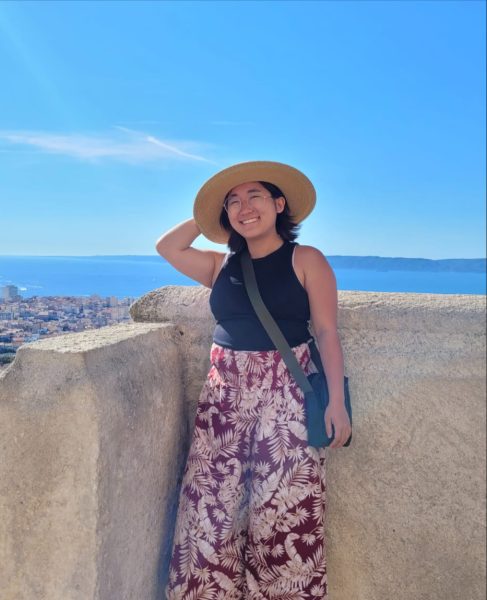Staniar gallery presents Aaron Turner’s “Black Alchemy”
September 27, 2022
On Sept. 5, Staniar Gallery opened Aaron Turner’s “Black Alchemy: if this one thing is true – Redux,” an abstract photography collection that explores the experiences of black people throughout history.
Born and raised in West Memphis, Arkansas, Turner uses his home state and the Mississippi Deltas as inspiration for his art, drawing on the people and the rich Black history of these places to explore the ideas of home and resilience. Turner also delves into the idea of home by bringing his identity into his work through hidden portraits of himself throughout the exhibit.
“The rich content of Aaron’s work—personal and community histories, identity, Blackness—is an important model for students learning about contemporary art,” said Clover Archer, director of the Staniar Gallery.
In his lecture on Sept. 20 at Wilson Hall, Turner spoke about how he uses his art to convey parts of history that are not often discussed or represented accurately.
Turner used his piece “Looking at Anthony Johnson,” as an example. In this piece, Turner depicts the subject with fabric-like wrinkles distorting the image. The reasons for these distortions are based on the misconceptions in Johnson’s story.
Many people believe Johnson was the first slave owner in America, but historians have shown this is false. Turner uses the distortions to represent how people take images and stories and repurpose them to create a certain narrative.
Another one of the pieces in the gallery, “Laid to Rest & At Peace (wandering legacies),” embodies the idea of often overlooked histories. In this piece, black film is laid over four pictures of Martin Luther King Jr. and Malcolm X enjoying leisure activities like going on vacation or taking a picture.
Turner explained how it wasn’t common to find pictures of these figures doing things that they enjoyed. He said the piece is important for him because it frames these men like everyday people.
“When we see or think about MLK, it is not on vacation in Jamaica. When we think about Malcolm X it’s not him as a photographer,” Turner said. “So, what is it about photography that Malcolm X enjoyed? What is it like to think about MLK on vacation versus a civil rights leader? They were everyday people just like all of us. But that is not often the narrative that is explored.”
Along with delving into the historical themes of his exhibit, Turner talked about how he utilized Adrienne Edwards’s book, Blackness in Abstraction, as an inspiration for his work.
Edwards, a New York-based curator and author emphasizes “blackness as material, method and mode, insisting on blackness as a multiplicity.”
Turner’s work reflected this perspective through the general monochrome nature of his pieces, as well as the different textures of the color black in his work. From the harsh chalk-like grids to the softer wrinkling of fabric, Turner’s use of the color creates a unique expression of themes of history and identity.
The exhibit is open to the public until Oct. 5 for those who would like to experience Aaron Turner’s work themselves.



